Results 21 to 30 of 45
Threaded View
-
02-26-2013, 12:24 AM #1Junior Member

- Join Date
- Feb 2013
- Location
- Troutman NC
- Posts
- 18
Thanked: 2 Casting Scales from Silver Gold Brass etc.
Casting Scales from Silver Gold Brass etc.
Hey guys, I have built up a collection of Razors that need restoration, and I have been looking for materials to make the scales from. I am a metal fabricator by trade and it got me thinking about what I could do to make some scales from other materials besides wood and bone.
Then I remembered that a friend of mine who is (30+ years older than me) used to cast his own jewelry back when gold was 300 bucks an ounce instead of 1500 bucks like it is today.
We passed around the moonshine for awhile and came to the conclusion that we had everything that was required to cast scales from Gold, Sterling Silver, brass, or possibly other material.
Here is the first few steps in that process. Keep in mind that I know NOTHING about casting jewelry, but I am a quick study.
Step 1: Make the scales from Wax
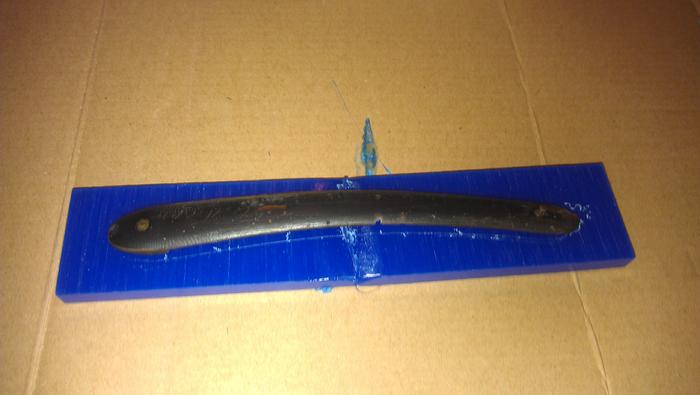
Basically this involves getting some File-A-wax which is like candlewax but much harder. It is almost like plastic. Then drawing or carving the shape into the block. Just like making a scale from a blank.
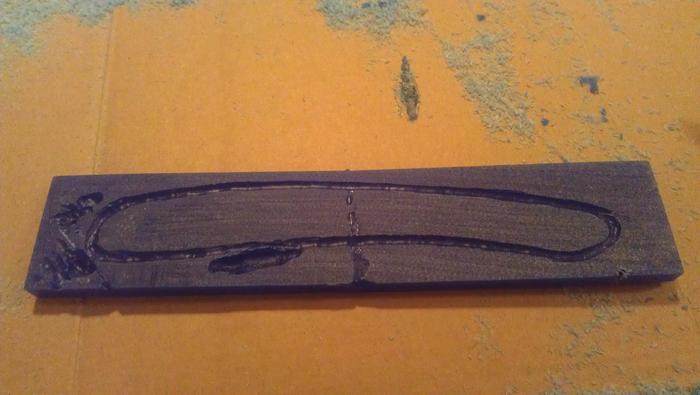
The blanks are saw cut so I sanded them flat before I started. The blocks are designed for rings and jewelry so I had to weld two of them together which is nothing more than melting wax, sticking them together, and then letting it cool. I used a butane lighter.
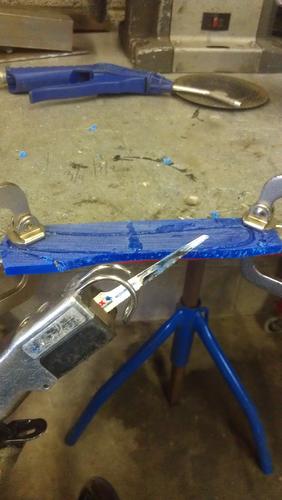
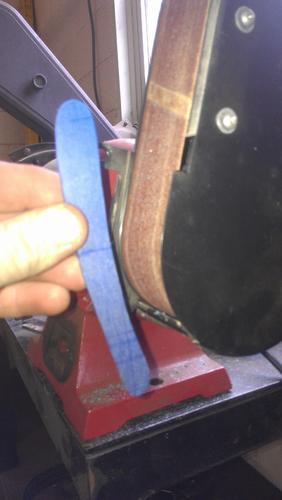
I used my airsaw to rough out the shape and then used the belt sander to fine tune it. Then I used my 3" DA sander to shape the sides. I started out with 40 grit paper and worked it up to 320. It still had scratches but I plan on polishing out any imperfections after it is cast.
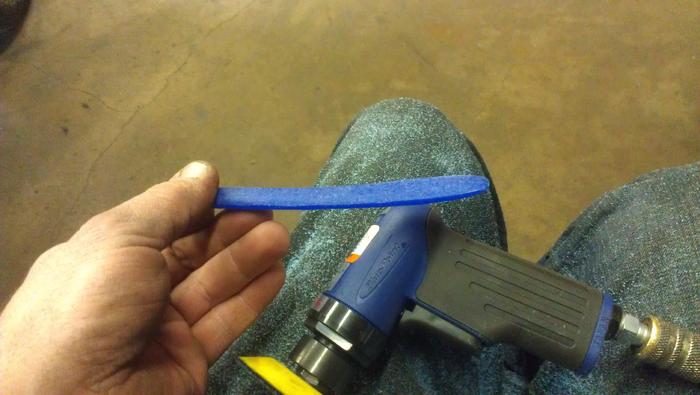
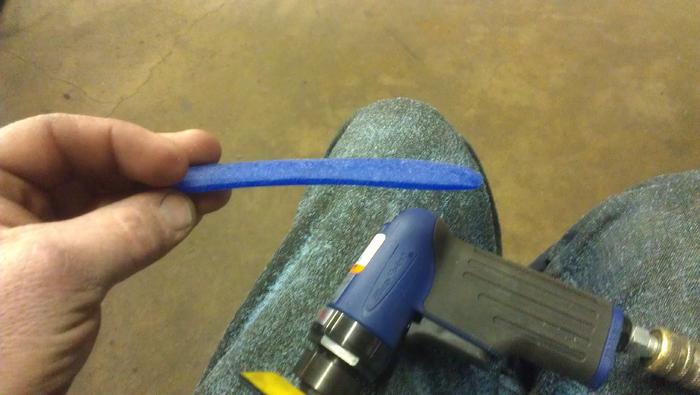
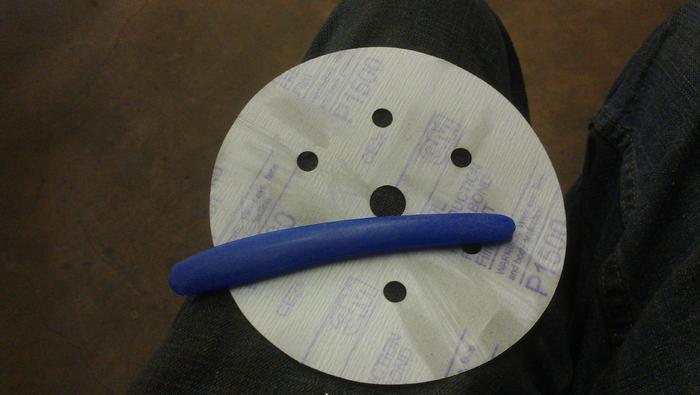
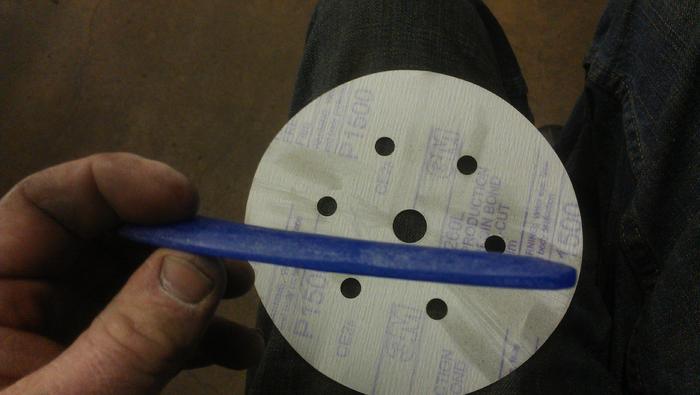
I might have forgotten to mention that I am shaping both sides from a single piece of wax. I am not using a wedge pin and I am casting the wedge along with the rest of the scales. The hardest part was making the slot where the blade will rest. I did it with a steady hand and a Small jet band saw that can be vertical or horizontal. This might be easier with a scroll saw. But the band saw blade needs to be wide enough to accomodate the razor blade. OR just go the traditional route and build the scales in two pieces.
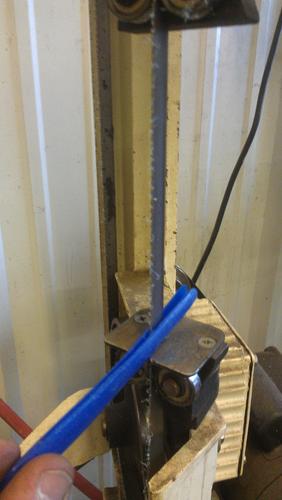
There was a little more sanding and some cleaning up of edges and sanding between the scales...but at this point the whole thing is very delicate. Each scale is about 3/32 thick. But the great thing about wax is that you can weld it back together if you break it or add material to cover imperfections.
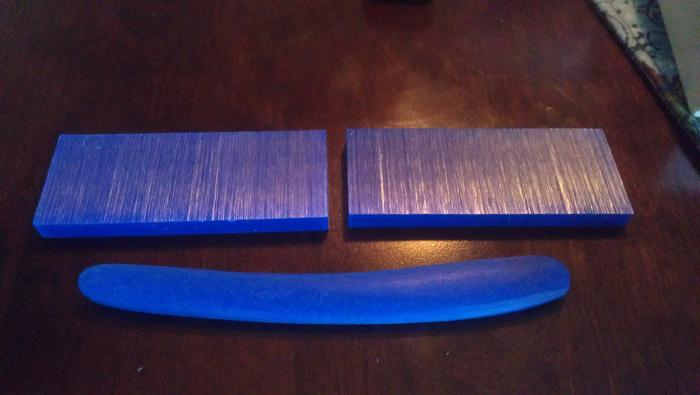
Continued on next post.....
-
The Following User Says Thank You to doublev23 For This Useful Post:
Adam G. (02-26-2013)


 65Likes
65Likes LinkBack URL
LinkBack URL About LinkBacks
About LinkBacks






 Reply With Quote
Reply With Quote